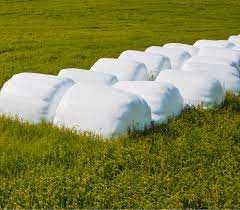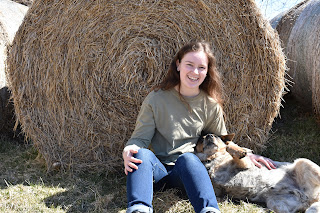What's the Hype about Silage?
If you've been around a cattle farm you've probably heard of silage; its now a regular conversation topic at dinner at my house, but if you haven't it might be something you want to stick around and read about because it's kind of cool.
What is Silage?
Used for feed, silage is comprised of grasses or crops that are cut and baled before they are dry and then left to ferment before being fed to livestock.
How does it work?
A very important aspect of this process is that the wet bales are tightly wrapped in plastic right after they are baled. The plastic forms an airtight seal around the bale which allows the fermentation process to occur. When the bales start to ferment they produce lactic acid, which acts as a natural preservative. This means that the grasses in the bale will be more similar to fresh grass than a dry bale. Sounds kind cool and kind of gross right?
Why is it better?
For years people have been baling dry hay for feed which is a great practice, but as many of us know the weather doesn't always cooperate with that. Rainy summer? There's no way you're going to get all of your hay dried and baled. Hence why many farmers, especially in wetter regions, started experimenting with silage.
Not only is silage easier to put up in bad climates, it is also more palatable and nutritious for livestock. Baling wet forage leads to less leaf loss on the crop, and guess what, there is more protein in the leaves of a plant thus making silage a higher protein feed. There are also studies that show that livestock eat silage better than dry feed which means there is less material loss.
Speaking of material loss did you know that when baling dry hay there is a 6% yield loss on the next cutting every day the grass is driven over after it is mowed? By the time you rake and bale it the loss on your next cutting could be close to 30%! Since Silage is baled within 24 hours of cutting this loss isn't nearly as much of a problem.
While there are many benefits to putting up silage, like anything it is a time consuming practice, or at least it is in my experience, but that's a story for another day. However, personally I do think it's worth the hype. Hopefully you learned something today, but if not tell me about your experience with silage, and what you like and don't like about it.



Comments
Post a Comment